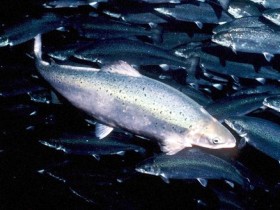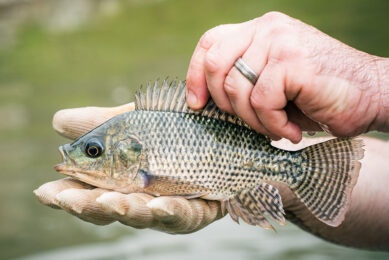Growing salmon on fishmeal with vegetables

Norwegian scientists have found that marine nutrients of immense value to the farmed fish can be better exploited in combination with plant proteins.
Fishmeal is a valuable source of protein that producers of fish feed for the aquaculture industry want to use less of, owing to a combination of price, sustainability and flexibility. Therefore, increasingly more fishmeal is being replaced with protein-rich plants.
But plants cannot completely replace marine ingredients without affecting the performance of the farmed fish.
Consequently, Nofima Ingrediens is trying a different approach: by increasing the nutritional value of the fishmeal, less fishmeal is needed in the feed than before.
Valuable nutrients
Some of the substances that make marine raw ingredients valuable are separated with water in the production of fishmeal. This water is called stickwater.
To exploit this stickwater, it is highly concentrated and transferred back to the fishmeal.
Examples of substances in the stickwater include free amino acids, peptides, small proteins, minerals, soluble vitamins and small components such as taurine, creatinine and carnosine.
"In the production of fishmeal of high quality, all stickwater is transferred back," says Katerina Kousoulaki, who together with Anders Aksnes at Nofima Ingrediens in Bergen, Norway has headed the project.
"But in the production of fishmeal of low quality for other purposes, there is a surplus of stickwater which we believe can be exploited in fish feed for the aquaculture industry."
10% gave good growth
The scientists wanted to see how large the growth gain was for salmon receiving feed with different contents of stickwater, and feed in which part of the fishmeal was replaced with meal of vegetable origin.
A trial was carried out in which juvenile salmon in saltwater received eight different feeds. One of the feeds was commercial and contained 30% fishmeal. The remaining seven feeds contained just 10% fishmeal, but contained stickwater equivalent to that in the commercial feed and up to 200% over and above that found in commercial feed.
The results after 10 weeks’ feeding showed that there was no difference in growth between fish that had received 10% fishmeal with an extra supply of stickwater and those that had received 30% fishmeal.
These results show how decisive tiny marine components are in salmon feeds containing much plant material.
Increased use of stickwater will mean that the feed producers can use more vegetable protein raw materials than previously.
"I hope that these results will lead to this important resource for farmed fish being fully exploited," concludes Kousoulaki.
This research was funded by Nofima Ingrediens and feed manufacturer BioMar AS.











